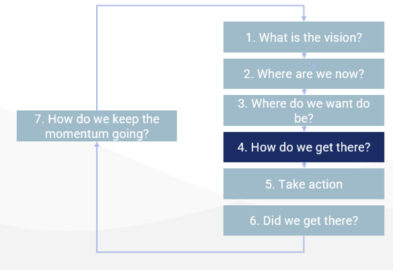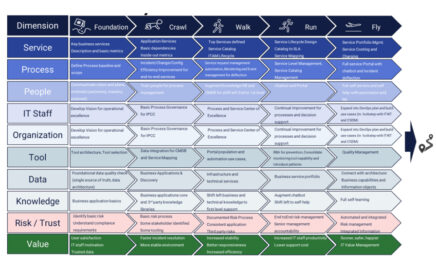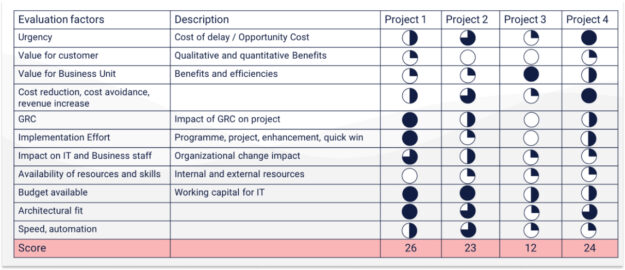Contact person
Markus Schweizer
Principal Strategy Consultant
Lead change projects often fail because too many ambitious goals are set. This is where the Continual Improvement Model of ITIL 4 can help, especially with road mapping. In this blog, I will teach you all the tips and tricks of road mapping I know. All to create a rock–solid planning for your improvement projects.
I’m Marcus Schweizer, Strategy Consultant & Service Management Expert. In a series of blog posts on the 7-step ITIL4 Continual Improvement Model, I will share concepts, ideas and lessons learned that I apply in my daily work.
Now, let’s talk road mapping. It has everything to do with the 4th step in the ITIL4 Continual Improvement Model: How do we get there?
Let me start by giving you a couple of tried and tested tips that will help you move forward after assessment in step 2 (Where are we now?) and the definition of the future status in step 3 (Where do we want to be?) to select, evaluate, prioritize and plan the right implementation steps.

The biggest challenges in planning an implementation program or project are often the identification of improvement projects and their dependencies. According to ITIL 4, each step must be evaluated in the 4 dimensions in order to be successfully implemented and carried out.
However, this often leads to intense discussions about the order of implementation. The dependencies between the 4 dimensions can lead to significant problems when planning the implementation. What is to be done first? Implement tools, define processes or train employees?
Do the priorities align with the business case? How long must or may the transition period be?
Often, too many and too ambitious goals are set, stopping the project to a grinding halt.
You don’t make progress if you pursue a goal in isolation. Everything needs to be coordinated in an orchestrated approach – process, organization, people, users, customers, and tools. Coordinating all of these requires a multidimensional approach in agile steps.
To discuss these questions, we have developed an evolutionary model that describes developmental steps for different dimensions. This helps identify dependencies and coordination needs:

This model shows that it doesn’t make sense to advance only one dimension or to develop all dimensions at the same time. The dimensions and objectives chosen depend on the organization and the project’s nature. In the end, it creates a patchwork of goals that can be used for prioritization.
The key is to identify clear use cases and achieve them gradually in a balanced manner. At the same time, don’t neglect strategic goals and create value continuously. But don’t ignore the risks either.
Depending on the market situation, one’s capabilities, and industry-specific compliance requirements, choose balanced steps for each organization.
A balanced roadmap is important for the right selection and weighting of the individual factors. Various aspects, including urgency, project size, risks, value for customers, IT, and employees, etc., should be taken into account as they can determine the implementation project’s success. Therefore, it is important to evaluate them based on mutually agreed criteria.
The graph below uses the Harvey Balls (0-25-50-75-100%) to determine the correct order of projects:

It is easy to develop a roadmap with these inputs. A roadmap is not a detailed project plan; but outlines possible implementation steps, roughly estimated in terms of effort (T-Shirt sizes: S, M, L, XL) with the goal of gaining approval from all stakeholders, especially decision-makers. The typical timeframe for a roadmap is usually between 18 and 24 months.
This way, the first 6 months are planned in more detail and implemented in an agile manner. For detailed planning or introducing technologies, I often use another approach – breaking down the business requirements step by step and again taking all dimensions into account.
The advantage is that IT and business architects are also involved. And, above all, helps avoid one-dimensional inside-out thinking where the technical possibilities determine the solution.
Road mapping is an important and valuable step in the Continual Improvement Model. When done carefully, a roadmap contributes to planning security. A roadmap does not prevent the implementation of an agile approach – instead, it’s an important orientation aid for backlog planning and the proof of value.
For correct application of road mapping, follow the Guiding Principles of ITIL 4:



Sign up to our monthly Flow@Work Exclusive newsletter to get free access to our expertise and lots of tips and tricks to make work flow on the Now® Platform.